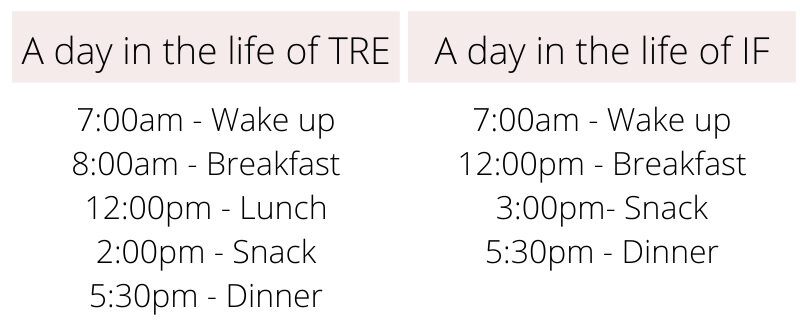Intermittent Fasting vs Time Restricted Eating (Part 1 of 3)
The desire to lose weight has become a common topic everywhere you look. Each year, it seems like a new diet is discovered, promising everything under the sun. This blog post is the first in a three-part series, focusing on two diets in particular that have similarities:
Intermittent Fasting and Time Restricted Eating
What is it?
Intermittent fasting (IF) consists of two common methods:
Fasting (not eating) for 16-18 hours a day, allowing an eating window of 6-8 hours a day
Consuming 500-600 calories a day, 2 days a week, while eating your normal diet the rest of the week. This is often called the 5:2 diet.
Time Restricted Eating (TRE) usually allows an 8-10 hour eating window, while fasting the rest of the day. It is very similar to IF, but less restrictive.
Glucose is the body’s main source of fuel in normal circumstances. When you fast, your body starts to use ketones for fuel rather than using glucose. IF and TRE both include periods of fasting. Fasting has shown to be beneficial, allowing the body to be more efficient in defending itself against oxidative and metabolic stress and helping the removal and/or repair of damaged molecules. Other benefits can include improving glucose regulation, reducing inflammation, and lowering cholesterol and blood pressure levels.
Can it help with weight-loss?
Yes, most likely, they can help with weight-loss. Choosing nutritious foods is best for overall health and to help with disease prevention. However, if you are also looking for more structure in your eating schedule, then IF and TRE may help. Instead of focusing on calorie counting and portion control, IF and TRE focus on the period of time in which you eat.
Is this a right fit for you?
If you go long periods without eating and don’t follow a meal schedule, unfortunately that can wreak havoc on your metabolism and essentially slow it down, contributing to weight gain and feeling tired.
Intermittent Fasting has a very small eating window of 6-8 hours, so this can get in the way of proper fueling for exercise and going out to dinners or social events. Time Restricted Eating may be a better fit, particularly if you choose a 10 hour window period for your meals. Not only is TRE a more flexible eating schedule, but it can help stabilize your blood sugar throughout the day, providing you with more energy and less cravings. Below is a table showing you an example of a meal schedule for each scenario: 10 hours on the left, 6 hours on the right.
Bringing it all together…
Research has shown benefits with both diets, including weight loss and improvements in cardiovascular health. Research also shows that eating in the morning and early in the day has cardiometabolic benefits compared to eating late in the day, which can cause negative outcomes. However, there isn’t enough long term research to actually know if these diets can provide a long term solution.
If you are thinking of starting a new way of eating and want to know if IF or TRE will work for you, send me an email! I can help you find the best fit.

